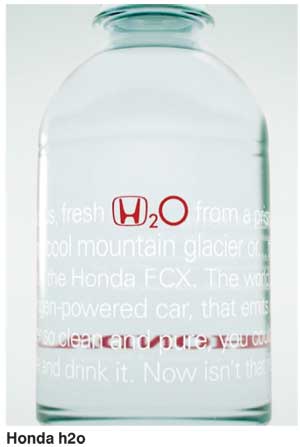Tuesday Nov 18, 2025
Tuesday Nov 18, 2025
Tuesday, 4 August 2015 00:52 - - {{hitsCtrl.values.hits}}
By Ruchi Gunewardene
With the passing of the industrial age and the digital age, as we embark on the next phase which is the age of imagination, we need to shed our old world thinking and move into the new magical world of ‘experiences’.
The digital environment enables us to envelope the customer with a total experience, for which a physical presence at a retail store is no longer required. Many companies (whether it be product, service marketing or business to business) are now looking at how their products and services can offer a total sensorial experience to customers, both virtually and physically.
This can lead to a sustainable competitive advantage that companies can carve out for themselves. For a country like Sri Lanka, with operations of a relatively small scale, this is the only way forward to capture global market share through innovation, design, a solution mind set and with the brand at the heart of the business, offering unique experiences to all those who come in touch with them. This enables us to focus our attention on market segments and to niche consumers who have greater price discretion.

Herein lies the power of design solutions, which many major international companies have embarked on, with considerable impact.
Chief Design Officer (or CDO) is now a corporate title, reporting directly to the CEO at Apple, PepsiCo, Philips and Kia Motors. The CDO is typically responsible for overseeing all design aspects of a company’s products and services, including product design, user experience design, industrial design, and package design, which also includes aspects of advertising, marketing, systems, processing and engineering.
Design in this context means a creative mechanism for solving problems or creating unique customer experiences that either answers a customer’s needs or enhances his or her experience further. It essentially integrates many aspects of a business, providing solutions resulting in new customer experiences.
Design can help companies better understand their users’ needs through innovative solutions. This may range from redesigning existing products or new product development, to making a website more user-focused, to developing a new customer service proposition for a hotel, retailer or a bank.
Companies that do not have this position are slower to react, because different heads are responsible for different parts of the business and there is little room for integration, except at the CEO level.
In order to ensure there is consistency in the solutions being offered, and continuous improvement and innovation in a single direction, there has to be a clear definition of what the company stands for, which is captured in the brand. Unless this is well defined  and grounded in each individual company, there will be little direction for the team to follow or guidelines on which the customer experience can be consciously built.
and grounded in each individual company, there will be little direction for the team to follow or guidelines on which the customer experience can be consciously built.
When looked at like this, the brand is no longer a logo or a design which so many companies still believe it is. It is not something that is limited to what the packaging looks like. Instead, it is a holistic expression of the user experience.
This new mind set of ‘design’ is applicable everywhere. It can be used for environmental solutions for example. Could you ever imagine drinking water that’s distilled from a car exhaust pipe? Well, Honda could. Their new hydrogen powered car, Honda FCX runs so clean, its exhaust pipes contains only clean water that’s drinkable. Although it was a PR/communication exercise, the company bottled this water, branded as H2O, and gave it away as free samples at movie theatres.
Design solutions lead to new product innovations. And it need not be high tech either. In India, MittiCool is a refrigerator that runs without electricity. It cools water and vegetables last up to a week. But the best part is this green innovation is made entirely of clay and other natural materials. The brand also includes water filters, pressure cookers, and non-stick pans, all made of clay.
The Brandix brand is now well defined which sets out to provide inspired solutions to their customers. Very early on, they identified that speed of delivery was the most critical element that could make the biggest difference to their customers and they set out to redesign their systems and processes in order to live up to their brand promise.
Through many years of consistently honing this capability, Brandix now has a significant competitive advantage on speed which it is able to leverage.
The power of inspired solutions does not stop merely with the customer for Brandix. It has instilled the essence of the brand into its employees through the work places that it has built for them. Each location is a unique mixture of interior design, architecture and  environments that allow the employees the space to work and relax.
environments that allow the employees the space to work and relax.
As market places get crowded and as companies seek growth, it needs to take the long term path of development through such brand led, design solution’s view. It is this which leads to creating experiences across multiple stakeholders not just a single dimensional customer perspective.
Another great example of design is Apple. Anyone who has purchased an Apple iPad and opened it will know what an exercise of pure joythat is, through the simplicity of the experience. The minimalism of the product, the packaging has all been crafted after immense amount of research and development, and presented to the customer as a holistic experience that no other product has offered to date. Of course, once done, there those who will copy it, but the culture of the brand is so strongly embedded in the company that it is confident it can continue to innovate and be a step ahead of the competition.
Design is so intrinsic to Apple’s culture that Steve Jobs once said, that the inside of the iPhone is as well designed as the outside, although the customer will never know what the inside looks like. Such is in the integrity of the overarching beliefs ingrained in the Apple brand.
The new Apple ‘spaceship’ headquarters that is currently being built continues that ethos, and will provide an inspirational environment for its associates.
The challenge with embarking on such a brand journey is that it takes years to fine tune and to embed into the culture of the company. But, once done it will create significant value. Brand Finance’s research shows that branded businesses have significantly higher shareholder returns than those that do not have a strong brand.
Such a strategy should be adopted by more companies in Sri Lanka as we seek to accelerate value creation and not focus purely on volume. Whether it be in the tea industry (where Dilmah is still the only truly global Sri Lankan brand) or in the hotel industry (where Cinnamon has commenced its brand building journey) many more companies and industries need to follow suit and take this path.
(The writer is Managing Director of Brand Finance Lanka)